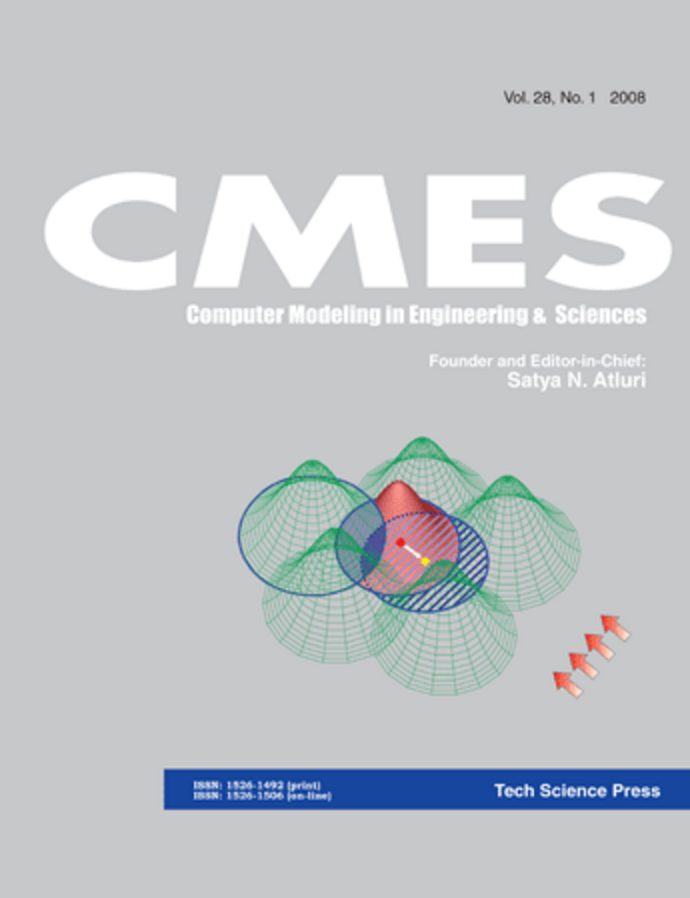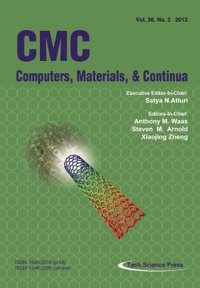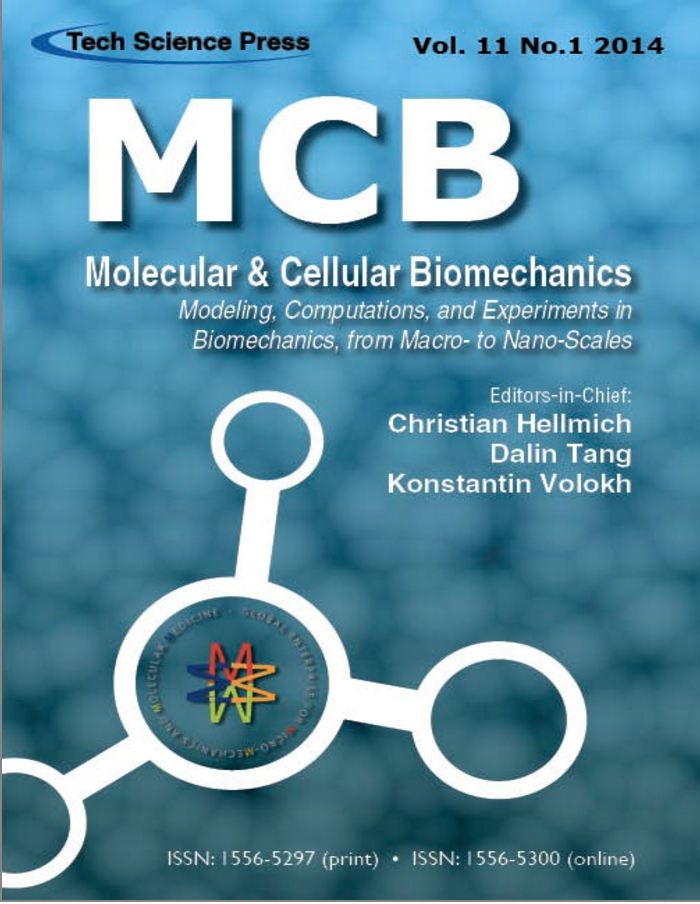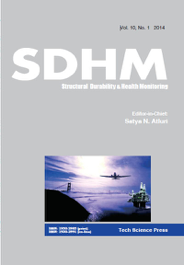Founded Journals/Founding Editor-in-Chief
 Computer Modeling in Engineering & Sciences (CMES)
Computer Modeling in Engineering & Sciences (CMES)
The goal of the International Journal Computer Modeling in Engineering and Sciences" is to bring together researchers from the three genera areas of:
- Contemporary Engineering, Physical, Chemical and Biological Sciences,
- Systems Integration Through Computations,
- and Advanced Communications and Information Processing Technologies
to foster a stronger multi- & inter-disciplinary research for the advancement of computational modeling capabilities in the coming decades. This will be the unique role of "CMES: Computer Modeling in Engineering & Sciences" in the archival literature. Also, Computer Modeling is expected to play a dominant role in Information technology, as the later discipline evolves in the coming decades. Information technology will depend not only on the hardware associated with computing, communications, large-scale data management, informatics, etc. but even more strongly on the software, whose core can be characterized as Computational Modeling as enumerated above.
These are the motivations that prompted the creation, in 2000, of "CMES: Computer Modeling in Engineering & Sciences". As it enters its fourth year of publication, with Volume 4 and 6 issues in 2003, it is clear that CMES is well on its way to fulfill its mission. Also, because of the ever-increasing flow of manuscripts, and a large back-log of papers in spite of very stringent review and acceptance procedures, CMES will be published monthly, with 2 Volumes and 12 issues, beginning January 2004.
 Computer Materials & Continua (CMC)
Computer Materials & Continua (CMC)
Aims and Scope: The aim of CMC is to attract the best scientific contributions from the elite research institutions in the USA, Europe, Asia, and all other countries of the world. Four extraordinarily distinguished Editors-in-Chief have been appointed. CMC is a companion journal to "CMES: Computer Modeling in Engineering & Sciences". While CMES publishes original scholarly articles of fundamental interest to a much broader audience, CMC publishes shorter original articles of interest in selected topical areas in emerging engineering & science research disciplines.
The scope of the journal is covered by the topics: computer modeling & simulation; analysis and synthesis of engineered structural and functional materials; biomaterials; smart materials and structures; solid and fluid mechanics; micro-electromechanical systems; nano-electromechanical systems; nano-micro-macro-level coupled modeling; nano-structured composites; chemomechanical engineering in biosystems; and application of these sciences and technologies in process-and-product development for economic growth, etc.
 Mechanic and Chemistry of Biosystems (MCB)
Mechanic and Chemistry of Biosystems (MCB)
Mechanical Behaviour of Single Cells: Studies of how cells sense mechanical forces or deformations and transduce them into biological responses. Specifically, studies of how mechanical forces alter cell growth, differentiation, movement, signal transduction, protein secretion and transport, gene expression and regulation. Studies of single cell behavior, including viscoelastic properties, cell growth, spreading, rounding, crawling, cell adhesion, cell cytoskeleton dynamics, cell-cell and cell-ECM interactions.
Effect of Force on the Function of Biomolecules: Studies of how mechanical forces and deformation affect the conformation, binding/reaction, and transport of biomolecules. Studies of how the structural rigidity of DNA, RNA and proteins under stretching, twisting, bending and shearing affects DNA condensation, gene replication and transcription, DNA-protein/RNA-protein interactions, protein function, protein-protein and receptor-ligand interactions. Studies of mechanochemical coupling in biomolecular motors. Studies of the mechanics of subcellular structures and protein assemblies/complexes.
Bio-inspired Devices and Biomimetic Systems: DNA and proteins as components of hybrid nanosystems; interfacing issues in organic/inorganic nanodevices; mechanics issues in bioMEMS/bioNEMS, biomolecular probes, micropatterned and functionalized surfaces, and biosensors/actuators. Studies of self-assembly processes and mechanics of self-assembled layers of biological materials, assembly of nanoparticles and biomolecules. Biomineralization. Biomimetic materials; engineered cells and tissues.
Multiscale Computational Tools: Development of simulation models and numerical methods for the analysis, modeling, and prediction of the behavior and function of single cells and biomolecules, and for the integration, optimization, control, strength and durability of hybrid multifunctional biological nano- and micro-systems. Methodologies include Molecular and Langevin dynamics of biomolecules and Mesoscopic modeling techniques. Multi-spatial and-time-scale modeling methodologies, and seamless coupling of nano-micro-macro computational models.
Experimental Biomechanics Methods: Development of experimental techniques to study the mechanical behavior of cells including local probes to deform a portion of the cell, mechanical deformation of a single cell, and simultaneous mechanical stressing of a population of cells. Methods for single-molecule biomechanics studies, including attachment, positioning and manipulating of single molecules, imaging and measuring deformation, and applying simple or combined loads.
 Structural Durability and Health Monitoring (SDHM)
Structural Durability and Health Monitoring (SDHM)
Aims and Scope: In order to maintain a reasonable cost for large scale structures such as airframes, offshore structures, nuclear plants etc., it is generally accepted that improved methods for structural integrity and durability assessment are required. Structural Health Monitoring (SHM) had emerged as an active area of research for fatigue life and damage accumulation prognostics.
This is important for design and maintains of new and aging structures. The potential benefits include:
- Increased quality and reliability by application of innovative practices and techniques
- Reduce costs by better design enabling lighter structures (hence fuel efficient), fewer inspection intervals hence reduce operating costs), less frequent replacement or repair of parts hence reduce wastage of structures)
- Improved safety and performance and reduce costly in service redesign
Structural Durability and Health Monitoring publishes original, high quality research papers, communications, and review articles related to structural health monitoring and durability. The aim of the journal is to bring together latest scientific and technological developments in the field.
The scope of the journal is multidisciplinary and contributions are sought from engineers, material scientist and applied mathematications.
Papers are sought that contribute to the following general topics related to Structural Durability and Health Monitoring:
- Structural integrity assessment
- Self-diagnostics, prognostics and condition-based maintenance
- Fracture mechanics
- Damage mechanics
- Smart materials for damage monitoring
- Damage tolerance assessment
- Fatigue
- Structural durability assessment
- Self-repairable structures
- Structural repairs and their monitoring
- Integration of structural health monitoring and control
Institute for Materials, Manufacturing, and Sustainment
-
Address
Texas Tech University, 2500 Broadway, Lubbock, TX 79409 -
Phone
806.742.2011 -
Email
webmaster@ttu.edu
